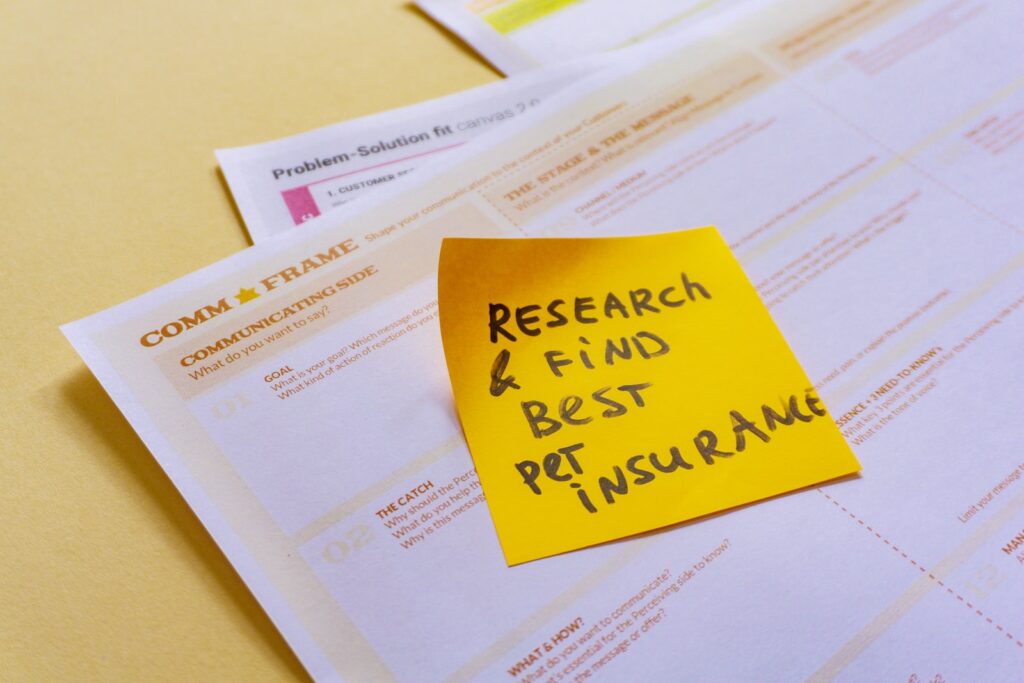The Benefits of Pet Insurance for Pet Owners
Picture this: You’re cuddled up on the couch with your furry best friend, binge-watching your favorite show. Suddenly, your pet starts to cough and you notice that they’re not acting like their usual self. Panic sets in as you rush them to the vet, wondering how much this unexpected visit is going to cost you. This scenario may sound all too familiar for many pet owners who have faced unexpected veterinary bills. That’s where pet insurance comes in – a way to protect both your fur baby and your finances when the unexpected happens.
In this blog post, we’ll dive into what exactly pet insurance is and how it works so that you can make an informed decision about whether or not it’s right for you and your beloved companion.
Introduction to Pet Insurance
As a pet owner, you want the best for your furry (or not-so-furry) friend. That’s why you might be considering pet insurance. But what is pet insurance, and how does it work?
Pet insurance is designed to help cover the cost of unexpected veterinary bills. It can help reimburse you for covered veterinary services such as routine check-ups, vaccinations, prescription medications, and more. Some policies even cover alternative care, such as acupuncture or chiropractic services.
Most pet insurance policies have a monthly premium that you pay just like you would for any other type of insurance policy. In exchange for this premium, the pet insurance company agrees to pay a portion of your eligible veterinary bills. Some policies have an annual deductible that you must meet before the policy begins paying out, while others have no deductible.
When you take your pet to the vet, they will provide you with an estimate of the expected costs of treatment. You then submit a claim form to the pet insurance company along with any necessary documentation (such as vet records). The pet insurance company will then process your claim and reimburse you for a portion of the covered expenses, typically 75% or 80%.
Pet insurance can be a valuable tool in helping to manage the cost of unexpected veterinary bills. It’s important to understand how pet insurance works before purchasing a policy so that you can make an informed decision about whether it’s right for you and your pet.
What is Pet Insurance?

Pet insurance is a type of insurance that helps cover the cost of your pet’s veterinary care. It can help you budget for unexpected veterinary expenses and gives you peace of mind in knowing that your pet is covered.
Pet insurance works by reimbursing you for eligible veterinary expenses after you pay out of pocket and submit a claim to the insurance company. Some policies have co-pays, deductibles, or limits on coverage, so it’s important to understand what your policy covers before you need to use it.
There are a variety of pet insurance plans available, so it’s important to compare policies and find one that meets your needs and budget. Be sure to read the fine print and understand the terms and conditions before signing up for a policy.
Factors to Consider When Buying Pet Insurance
There are a few key factors to keep in mind when shopping for pet insurance. First, you’ll want to make sure that the plan covers the type of animal you have. Some policies only cover certain kinds of pets, so be sure to read the fine print.
Next, you’ll want to consider what kind of coverage you need. Do you want a comprehensive plan that covers all major medical expenses? Or would you prefer a more basic policy that covers only accidents and illnesses?
Think about how much you’re willing to pay for premiums. Pet insurance can be expensive, so be sure to get quotes from a few different companies before making a decision.
Common Types of Pet Insurance Coverage
There are a few different types of pet insurance coverage that are commonly offered. The most basic type of coverage is for accidents and illnesses. This type of policy will cover any unexpected medical costs associated with your pet, whether it’s an accident or an illness. Some policies will also cover routine care, such as vaccinations and wellness exams.
Another type of pet insurance coverage is for liability. This type of policy will protect you if your pet causes damage to someone else’s property or injures another person. It’s important to note that this type of coverage is not included in all policies, so be sure to ask about it if it’s something you’re interested in.
There is also pet insurance coverage for breeds that are considered high risk. This type of policy is typically more expensive than other types, but it can be worth the peace of mind if you have a breed that is prone to health problems or accidents.
How much does Pet Insurance Cost?
There are a few factors that go into how much pet insurance costs, such as the type of pet, the age of the pet, where you live, and the coverage you want. Some basic plans may start as low as $10 per month, while more comprehensive plans can cost up to $100 per month.
To get a better idea of how much pet insurance will cost for your specific situation, it’s best to get quotes from various insurers. You can do this by visiting their websites or giving them a call. When getting quotes, make sure to ask about any discounts that may be available (for example, many companies offer discounts for policyholders who have multiple pets).
Claims Process for Pet Insurance Plans
When it comes to pet insurance, there are a few things you need to know in order to make sure that you’re getting the best coverage for your furry friend. The first thing you need to know is what the claims process is and how it works.
Most pet insurance plans will have a simple claims process that you can follow. The first step is to contact your pet insurance provider and let them know that you would like to file a claim. They will then ask you for some basic information about the incident, such as when it happened and what the medical bills are. Once they have this information, they will be able to start processing your claim.
In most cases, you will need to provide your pet’s medical records in order for the insurance company to process your claim. They may also require you to submit a police report if your pet was injured in an accident. Once all of the required documentation has been submitted, the insurance company will review your claim and make a decision about coverage. If everything looks good, they will send you a check for the amount that they have approved.
It’s important to remember that every pet insurance policy is different, so be sure to read over yours carefully before enrolling in order to understand what is and isn’t covered. This way, you’ll know exactly what to expect when it comes time to file a claim.
Pros and Cons of Pet Insurance
When it comes to deciding whether or not to get pet insurance, there are a lot of factors to consider. Here are some of the pros and cons of pet insurance to help you make your decision:
PROS
- It can give you peace of mind knowing that you have financial protection in case your pet needs expensive medical treatment.
- Some policies covers routine care expenses, like vaccinations and annual check-ups.
CONS
- Pet insurance policies can be expensive, and may not be worth the cost if your pet is healthy and unlikely to need extensive medical treatment.
- Policies typically have deductibles, co-pays, and exclusions that you need to be aware of.
- If you don’t read the fine print carefully, you could end up with a policy that doesn’t cover what you thought it did.
Alternatives to Pet Health Care Coverage
There are many ways to provide health care for your pet without insurance. One way is to set up a savings account specifically for your pet’s health care needs. This will allow you to have money set aside specifically for vet bills, should they arise.
Another alternative is to purchase a policy directly from a pet health care provider, such as VPI Pet Insurance. This can be a good option if you do not want the hassle of dealing with an insurance company.
You can also look into membership plans offered by some pet health care providers. These plans typically offer discounts on office visits, vaccinations, and other services.
Conclusion
Pet insurance is a great way to protect your beloved companion in case of an emergency. Being prepared for unforeseen veterinary bills before they occur can save you time and money, and give you peace of mind knowing that if the worst should happen, your pet will be well taken care of. By understanding how pet insurance works and learning all the details beforehand, you’ll ensure that both you and your furry friend are fully covered in times of need.







